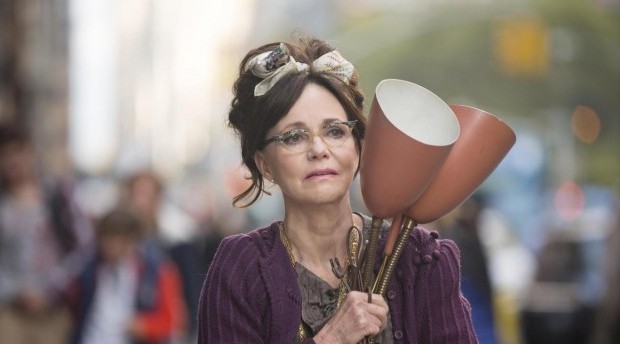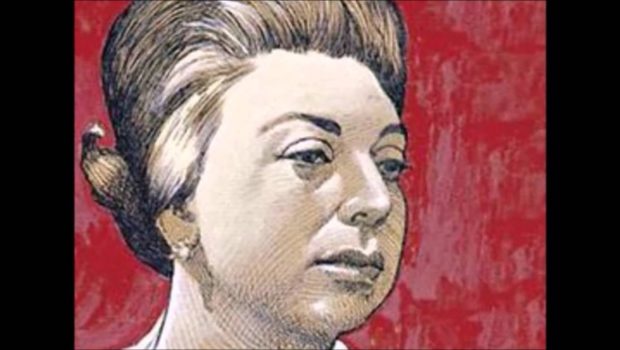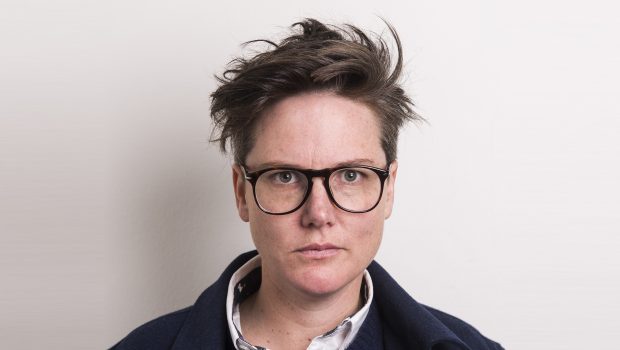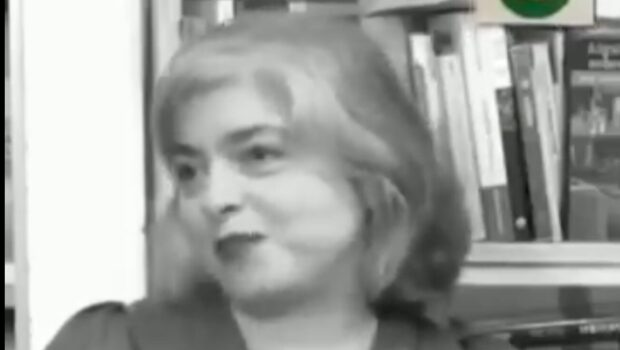Hello, My Name Is Doris
Lorís Simón Salum
 I arrive at the Paramount Theater in Austin, Texas unsure exactly what to expect. The movie I am about to see is called Hello, My Name Is Doris (2015), directed by Michael Showalter, and it is swarming with people inside. My seat is terrible. Despite my distaste for crowds, I summon my patience because I respect Sally Field (who plays Doris in the film), and because it will play only once at the South by Southwest Film Festival. In other words, because I have no choice.
I arrive at the Paramount Theater in Austin, Texas unsure exactly what to expect. The movie I am about to see is called Hello, My Name Is Doris (2015), directed by Michael Showalter, and it is swarming with people inside. My seat is terrible. Despite my distaste for crowds, I summon my patience because I respect Sally Field (who plays Doris in the film), and because it will play only once at the South by Southwest Film Festival. In other words, because I have no choice.
The movie starts out with a funeral, clearly marking death as one of the prominent themes. Doris’s mother has passed away. There is no sign of why she died, but I assume it is of old age, as Doris is probably in her early to mid 60’s. After the funeral, her siblings (Wendi McLendon-Covey and Stephen Root) attempt to persuade Doris to sell the house where she has lived for years with her mother. They also encourage her to sell all her “stuff.” Initially, I am led to sympathize with Doris: it is much too soon to be talking about legal red tape and money, do they have no hearts? But the moment I see Doris return to her home, I begin to reconsider my compassion. Her house is full of…everything. There are books and magazines packed on the staircase, one snow ski reclining on her kitchen wall, plants, lamps, things laying everywhere and anywhere. I am genuinely surprised to see only one cat appear on screen. The American Psychiatric Association would quickly diagnose Doris with a form of OCD called hoarding disorder, defined by excessively storing items that many would consider to be worthless. Sometimes this behavior stems from a sentimental attachment or a feeling of future need.
What is most interesting about hoarding is that it was not added onto the Diagnostic and Statistical Manual of Mental Disorders (DSM) until 2013, making it a brand-new disorder in the world of psychiatry. In the movie, Doris takes home anything that may generate the slightest form of meaning in her life, even if it is no more than a pencil lent to her by a new, handsome coworker, John (Max Greenfield). This pencil quickly shines brighter than her thousands of other belongings as she begins to fall for John in the most childish way imaginable. With the help of her friend’s 13-year-old granddaughter, Vivian (Isabella Acres), Doris creates a fake Facebook profile in order to befriend John and find out as much as she can about him. The first picture that comes up on his wall is an album cover by Baby Goya and the Nuclear Winters, an electro pop band that loves neon colors and drugs. Needless to say, she buys the CD and goes to her first concert in hopes of bumping into John. Which she does.
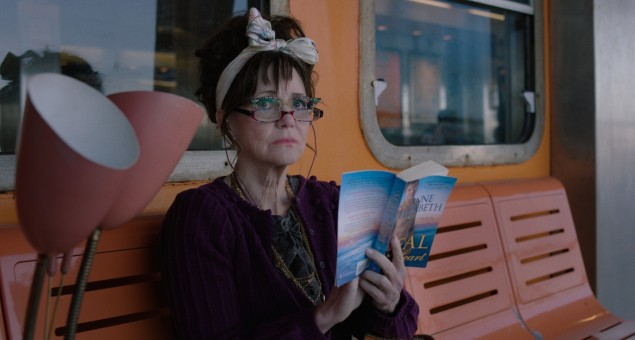
I know how easy it is to become engulfed in a romantic story with such a big age difference between the characters, but there is something deeper here that truly summons a more genuine interest. As Sally Field expressed it herself during an interview with The New York Times blog Arts Beat, “I think all human beings, and certainly me, always feel left out, always feel that you’re slightly on the outside of things. A lot of people fake it better than others. But you call on that part of yourself that just feels like, they’re all doing something and I don’t know how to get in.” Doris, no matter what her age is, is suffering from two of the most universal human conditions: loneliness and insignificance. The hoarding is a beautiful metaphor for all her unlived life, cramped inside a small home. There is an emptiness inside she must account for.
There is a wise saying, “fake it till you make it.” My mouth full of popcorn, I watch as Doris transforms her life in the name of John. I do not think she is aware of it, but the more their friendship develops, the more Doris becomes the person she really wants to be. At this point, there is no turning back. I still cringe in my seat, though. I fear that what may be a game changer for Doris is only a joke to John and the rest of his hipster friends. John only sees Doris as a funny old lady who likes to roll with younger people. Or does he? I am probably mouthing the words at the same time as Doris, “I am possible,” a phrase she learns from a motivational speaker who hears her say the word impossible. She is possible. She is possible. Wait, why do I care so much?
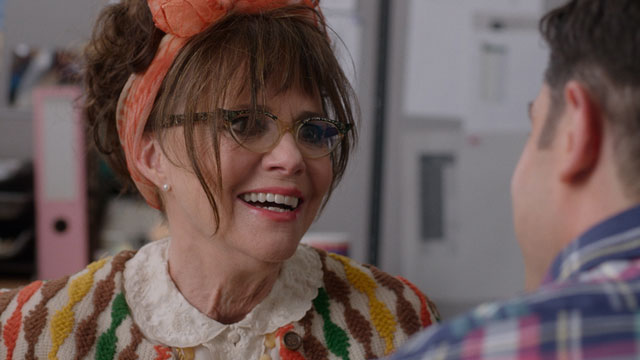
This is why comedy should never be underestimated. I have always thought comedians are truth-tellers, because they say the truth in a way that you are open to listening to it. Right now, I am listening: will John be interested in Doris the way she wants him to be? Will Doris come to the realization that hoarding is not a healthy habit? Will I ever turn into a Doris? While listening to the underlying theme, I am also crying and trying to figure out through the corners of my eyes whether anyone is judging my emotional breakdown.
The movie ends and it receives a standing ovation. Showalter steps out onto the stage along with Sally Field and some of the crew. I stare in admiration from afar, applauding and thinking at the same time of the things I have hoarded in my own life, symbolically and probably literally as well. It is a heart-felt movie that touches on one of the most contemporary dilemmas of our society: the feeling of emptiness and lack of meaning in our lives. I think we are all a bit guilty of living vicariously through an accumulation of fancy products or by exaggerating, even if just a little, our Facebook personae. At some point, we must come to terms with the fact that we are responsible for our own desolation and that there is no stuff that will make it go away. Death does not wait for us to finally feel happy and satisfied with what we came here to do. Even though I have grown fond of Doris over the past hour, I step outside of the movie theater a bit relieved that I am not a 60-year-old hoarder. However, I do feel everyone has an inner Doris who is afraid to take charge of her life. Just remember: you are possible.
 Lorís Simón Salum is a psychotherapist in private practice in Houston, TX. She is the author of Ensoulment: Exploring the Feminine Principle in Western Culture (2016), as well as the film director of the multi award-winning documentary Ensoulment: A Diverse Analysis of the Feminine in Western Culture (2013). She was the Creative Director for Literal Magazine for over 10 years. Some of her projects included Literally Short Film Festival, Literal’s short international film festival, and Literally Everything, Literal’s podcast. You can find her at www.lorissimon.com.
Lorís Simón Salum is a psychotherapist in private practice in Houston, TX. She is the author of Ensoulment: Exploring the Feminine Principle in Western Culture (2016), as well as the film director of the multi award-winning documentary Ensoulment: A Diverse Analysis of the Feminine in Western Culture (2013). She was the Creative Director for Literal Magazine for over 10 years. Some of her projects included Literally Short Film Festival, Literal’s short international film festival, and Literally Everything, Literal’s podcast. You can find her at www.lorissimon.com.
Posted: July 2, 2015 at 7:00 am


